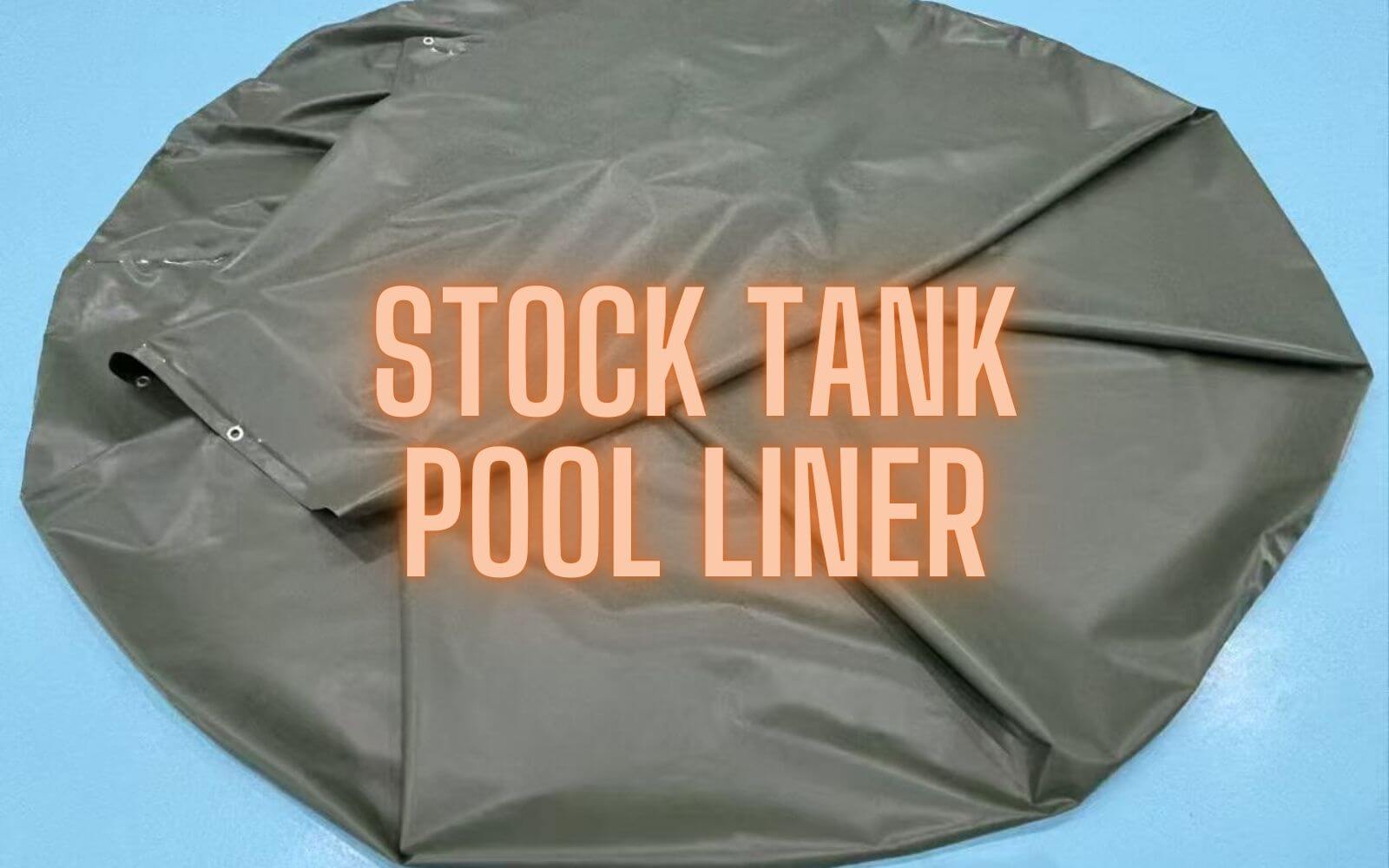STOCK TANK POOL LINER
Transforming a stock tank into a swimming pool requires one crucial component: a high-quality liner. Preventing the leakage of the rigid tanks needs a important part: water liner. In other cases, the enamel water tank also needs a liner inside to making sure the security of the storage. Choosing a right stock tank pool liner protects your investment, enhances durability, and elevates the pool’s aesthetic appeal. This guide explores liner materials, their benefits, and expert selection criteria to help you make an informed decision.
Understanding Stock Tank Pool Liner Materials
Not all liners are created equal. The material you choose impacts longevity, comfort, and maintenance requirements.
PVC Liners
The most popular choice for stock tank pools, flexible PVC liners offer an excellent balance of affordability and performance. These 0.4mm-1.0mmthick liners resist punctures and provide a smooth surface that’s gentle on feetand easy to maintain. Premium PVC materials include UV-resistance to prevent sun damage and antimicrobial, treatments to inhibit algae growth. The PVC liners mostly use for non-drinking water storage and supply, like the firefighting, irrigation, emergency water storage and supply, etc.
Polyester TPU Liners
For fuel storage, including the gasoline, diesel, and kerosene, etc, requests professional-grade durability, polyester TPUliners deliver superior performance. This synthetic TPUmaterial remains flexible in extreme temperatures (-40°C to 90°C) and typically lasts over 10 years. Using the polyester TPU even more expensive initially, but providing a compatible to fuel storage and long term life service, often makes it more cost-effective over time.
Polyether TPU Liners
Heavy-duty reinforced polyether TPUcombines multiple material layers for exceptional strength. These 0.4mm-1.0mmliners feature a food grade layers for safety for drinking water storage.
Key Benefits of Using a Quality Liner
Surface Protection
A proper liner creates a barrier between the water and metal tank, preventing corrosion and mineral buildup. This protection can extend your stock tank’s lifespan by 5-10 years.
EnhancedSwimming PoolComfort
The smooth surface of a liner eliminates the rough metal feel, providing a more pleasant swimming experience for swimming pool. Some textured liners even offer slip resistance for added safety.
SimplifiedPoolMaintenance
Lined pools are easier to clean and maintain. The non-porous surface prevents algae growth and makes vacuuming more effective. Most liners only require a quick wipe-down between uses.
Temperature Regulation
Quality liners help maintain water temperature by providing insulation. Darker colored liners can increase water temperature by 2-3°Cin sunny conditions.
Customization Options
From classic blueor greento modern patterned designs, liners allow you to personalize your pool’s appearance without permanent modifications.
How to Choose the Perfect Liner
Measure Accurately
Obtain precise measurements of your stock tank’s interior dimensions. Remember to account for any fittings or protrusions. Most manufacturers offer liners in standard stock tank sizes (8′, 10′, etc.), but custom options are available for unique configurations, including the shapes and the fittings position.
Consider Your Climate
For hot, sunny environments, prioritize UV-resistant materials. In colder regions, choose liners that remain flexible in low temperatures. PVC performs particularly well in variable climates.
Evaluate Usage Patterns
What will you use for? For water, fuel, or chemical storage? Opt for thicker, reinforced liners? Is the thicker performing better? We need to consider those above before. Drinking water storage, the polyether TPU needed, as it meets the food grade. And for fuel storage, the liner should consider the polyester TPU which is compatible to the fuel property. For occasional dipping/firefighting water supply, standard PVClinercan work. Commercial operations should always choose commercial-grade liners.
Budget Wisely
While premium liners cost more upfront, they often prove more economicalstorage method duringlong-term serve life. For instance, a 200 liner that lasts 10 years is better value than a 200 liner needing replacement every 3 years.
Installation Requirements
Some liners require professional installation, while others feature user-friendly designs with weighted corners for easy DIY setup. Consider your skill level and available tools.Most of time, the pool liners can easy install in 3 steps: open the liner, tie down liner with frame, done.
Professional Tips for Liner Longevity
Pre-Installation Prep: Clean and smooth the tank interior before installation
Chemical Balance: Maintain proper pH (7.2-7.8) to prevent material degradation
Winter Care: For cold climates, either remove the liner or use winterizing antifreeze
Regular Inspection: Check for wrinkles or stress points monthly
Gentle Cleaning: Use only approved pool cleaners – avoid abrasive tools
Conclusion
Selecting the right stock tank pool liner involves careful consideration of materials, climate, usage, and budget. Whether you choose durable PVC, potable poyether TPU, or good for fuel polyester TPU, a quality liner will protect your investment and enhance your liquid storage containers experience for years to come.
For premium stock tank pool liners designed to withstand heavy use and harsh conditions, explore our collection of commercial-grade options at Flixtank.








